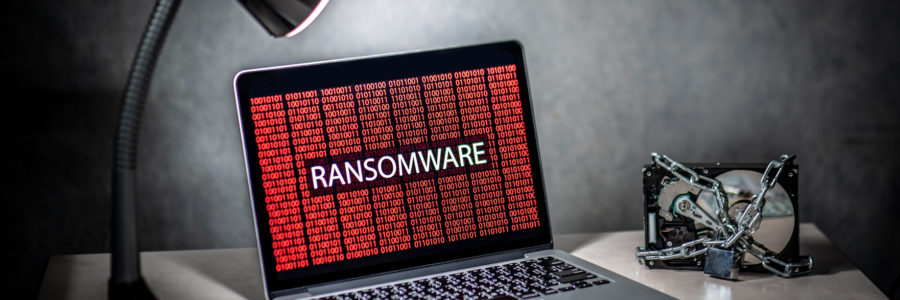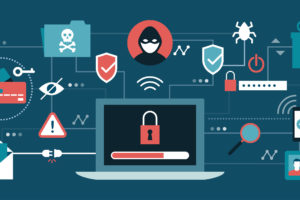Among all types of cyberattacks, ransomware can be the most frustrating, frightening, and expensive for small business owners. According to Beazley Breach Briefing, 70% of ransomware attacks in 2018 were directed against small businesses— and that number is only projected to grow. For one unlucky business, the attack cost $935,000.
What is ransomware? Ransomware is a kind of malicious software. While there are many variations, the most common kind of ransomware assumes command of your computer or mobile device.
Then, the data on your device is encrypted, so you can no longer retrieve or see it. Afterwards, the hacker will contact you via a phone call, email, text, or Skype message.
Typically speaking, the hacker will ask for some amount of money to unlock your device. This money may be paid in cash, credit, gift cards, or, more recently, BitCoin. The funds can be wired to the hacker, or paid via blockchain — which provides an untraceable way to pay.
There are also variations of ransomware where a hacker will display a pornographic image on your device, then demand money to remove it. This was an earlier variation of the ransomware scheme; since then, hackers have moved into encrypting secure business data.
This scheme sounds like a lot of work, and is. According to Symantec, ransomware hackers can make anywhere between $200 per victim and up to $394,000 in one month.
Luckily, there are a few ways to lower your chances of suffering from ransomware.
1) Back up all of your data
If your business’s important data exists on more than one computer or in the cloud, giving in to the ransomware hacker’s demands isn’t necessary. Since most hacker’s demand that you pay them in order to retrieve your files, having your files available elsewhere ensures that you don’t have to comply with their orders.
2) After a ransomware attack, destroy your old device and purchase a new one
Even if you pay the hacker holding your information hostage, there’s no guarantee that they won’t attempt to extort more money. What’s more, the programs that hackers use may leave residual programs, like keyloggers. In any case, your information has been compromised, and it’s safer to obtain a new device.
3) Avoid suspicious, non-work-related links
Talk to your employees about the risk of ransomware. In most cases, ransomware is transmitted to other devices by an illegitimate program, link, or advertisement. Ensure that your employees are only downloading programs from their publisher, encourage them to minimize non-work-related web surfing, and raise awareness about legitimate and non-legitimate hyperlinks.
4) Keep your antivirus upgraded
Many antivirus companies are struggling to stay one step ahead of hackers. Still, having a good antivirus installed on your devices can help prevent spam and the transmission of other viruses, which can lead to ransomware. By filtering out a lot of the dangers you encounter on the web, you can keep your devices safer from cybersecurity threats.
The Bottom Line
Guarding your business against ransomware is necessary, as the number of attacks are on the rise. In order to avoid paying ransom to hackers, you should beware of suspicious emails, websites, and advertisements, invest in a good antivirus, and back your important information up to the cloud.
Vodigy Networks is a leading IT service provider in Minneapolis and St. Paul. We work with businesses to make technology simple, easy, and seamless. Contact us today.




